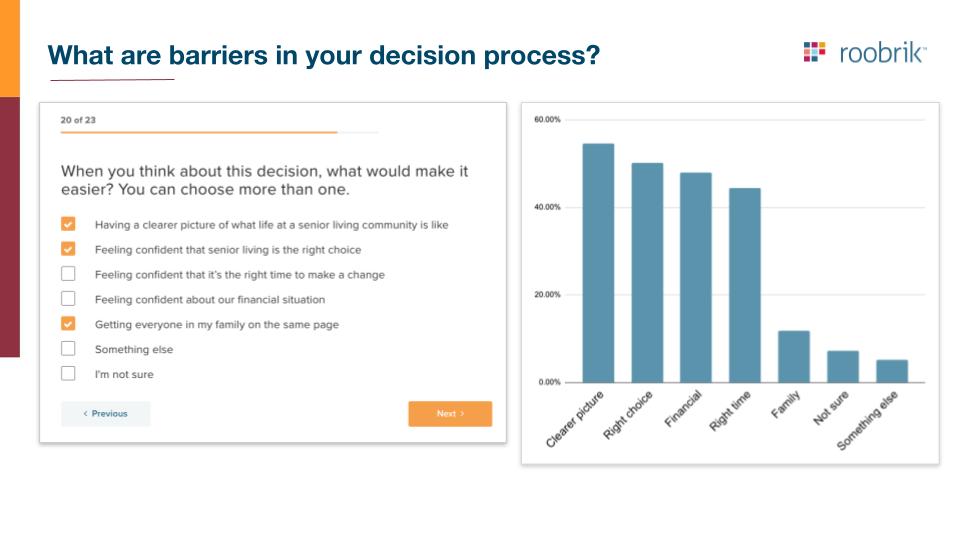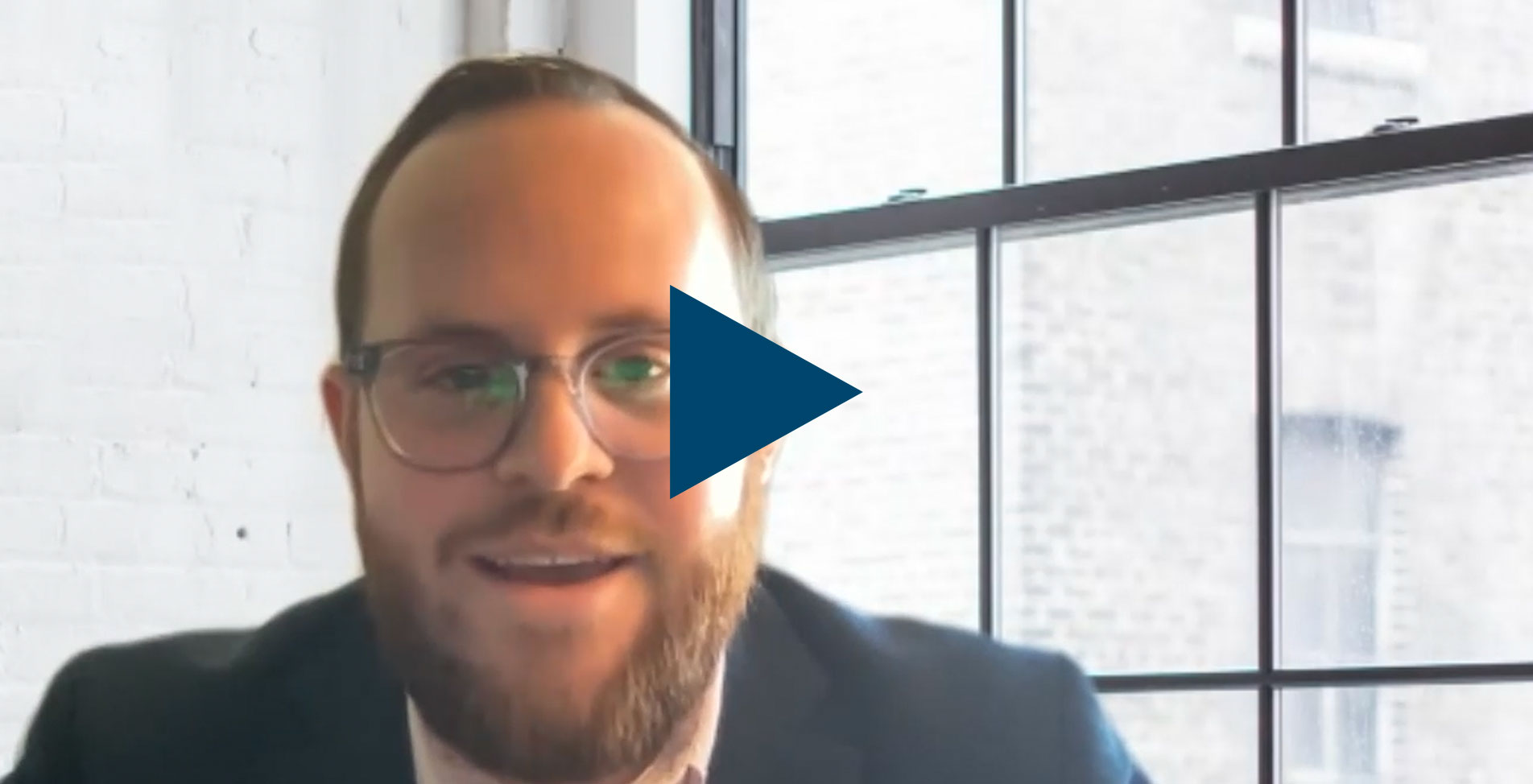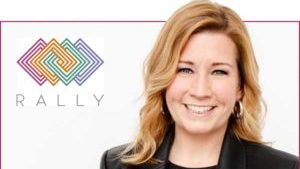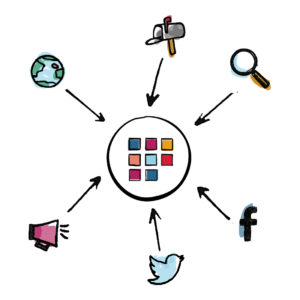A Sales Perspective on Roobrik: Interview with Ashley Ashley
Our clients tend to think of Roobrik first and foremost as a marketing tool, strengthening the brand, educating and engaging prospects, and of course, converting site visitors to sales-qualified leads.
But Roobrik is equally powerful as a sales tool, where it drives more move-ins by accelerating discovery, creating authentic conversations, and establishing a relationship with the brand earlier in the funnel. Recently we caught up with Ashley Ashley (yes, that’s her real name — not a typo!), the Corporate Director of Sales for Senior Services of America to discuss how her team relies on Roobrik to help families move forward, and get the right help faster.
Q: Tell us about your first impression of Roobrik.
 A: Well when I first heard about Roobrik, I understood it to be a tool that helps qualify people for senior living. My initial reaction was, “Our sales team can do that, we don’t need a tool.” After all, that’s part of our value as the sales team.
A: Well when I first heard about Roobrik, I understood it to be a tool that helps qualify people for senior living. My initial reaction was, “Our sales team can do that, we don’t need a tool.” After all, that’s part of our value as the sales team.
Now, having actually used it and seeing the reports that come back, I realize it’s so much more than a way to assess financial qualification. It’s a comprehensive way to qualify leads and gives us so much more insight into our customer’s journey.
It’s not only useful for us, it’s useful for the families. For example, there are often lots of decision-makers during the buying process and aligning them can be the most difficult part of our sales process. As sales people, we can speak until we’re blue in the face providing tons of valuable insight into their situation. But at the end of the day people like to have that third-party confirmation of their situation. That’s where Roobrik’s value comes in with families and for the sales team.
Q: Specifically, how does Roobrik help you and the salespeople you manage?
A: Roobrik has helped me tighten up the sales cycle. Sometimes we actually send it to the family to help them get aligned. Families get stuck when we don’t have influence or alignment among the decision makers. Roobrik can change that because it provides talking points for those with different perspectives. The caregiver is going to have one perspective while the out-of-town sibling who only talks to mom on the phone is going to have a totally different perspective. Roobrik helps bring everybody together in a level of understanding, which then helps us move them through the customer journey.
Q: Are Roobrik leads different from your typical web contact form leads?

A: 100% yes.
When we get a Roobrik lead it gives us good, insightful information. With a contact form we’re just shooting from the hip — Mom’s interested in the one-bedroom and their price range is this. With a Roobrik lead we go into our communication with them prepared.
We’re mentally armed with resources that fit the customer’s situation. We can brainstorm stories of other residents that we might want to share — very similar to when we’re giving an in-person tour. With the report in front of us, we have a better understanding of where the family is at in their customer journey.
Q: How do you think the family perceives interactions based on Roobrik reports?
A: Roobrik allows us to engage on a much deeper level sooner. For example, families call and ask about prices and square footage. Not because that’s the most important thing on their mind or because budget is their biggest obstacle. They ask because it’s something tangible that they can grab on to. Really, they’re grappling with bigger issues and uncertainty. They may think “Oh, my mom, she just needs assisted living.” But after answering Roobrik questions, they may see that memory care should be a consideration. Knowing that, our sales team can dive right into supporting the family. That’s a big conversation to get through, and they need a different level of support.
Q: Are there other ways that Roobrik helps the sales cycle?
A: Well you can’t have a conversation with someone if they don’t pick up the phone — and that happens sometimes. If it’s a Roobrik lead, we’ve found that we can leave a much more relevant voicemail that prompts folks to call us back. We have more content to relate, more ways to share value, and that gives them a reason to call us back.
Q: What are the top three pieces of information that you want to know about prospective residents to help move a lead forward?
A: First, family is alignment — It lets us know how we need to pivot and who we need to include in the conversation early.
Second, of course, is budget — not just what they’re hoping to pay, but really diving in to understand their full financial picture. Often, we’re able to help families problem solve and uncover solutions that they didn’t even know existed.
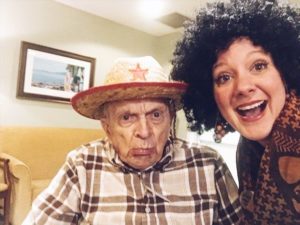 Third, I like to know if they’ve toured other communities. If they’ve toured several other communities and they’re still looking, I want to understand why. What are they looking for that they’re just not finding? It’s such a basic question but it gives us so much insight into what they’re looking for. We want to understand their aspirations so we can find a solution they can look forward to. Knowing why they’re still looking gives us that insight.
Third, I like to know if they’ve toured other communities. If they’ve toured several other communities and they’re still looking, I want to understand why. What are they looking for that they’re just not finding? It’s such a basic question but it gives us so much insight into what they’re looking for. We want to understand their aspirations so we can find a solution they can look forward to. Knowing why they’re still looking gives us that insight.
Q: What are the primary points you want to communicate to prospective residents? Especially in the first conversation about Senior Services of America communities?
A: The most important thing is that they understand we’re here to be a resource. If we’re not the right fit, that’s okay. We’ll help them find the right fit. We strive to understand their situation so we can understand their fears, hopes and dreams. We might ask some tough questions but we’re doing it because we want to find the right solution for them.


